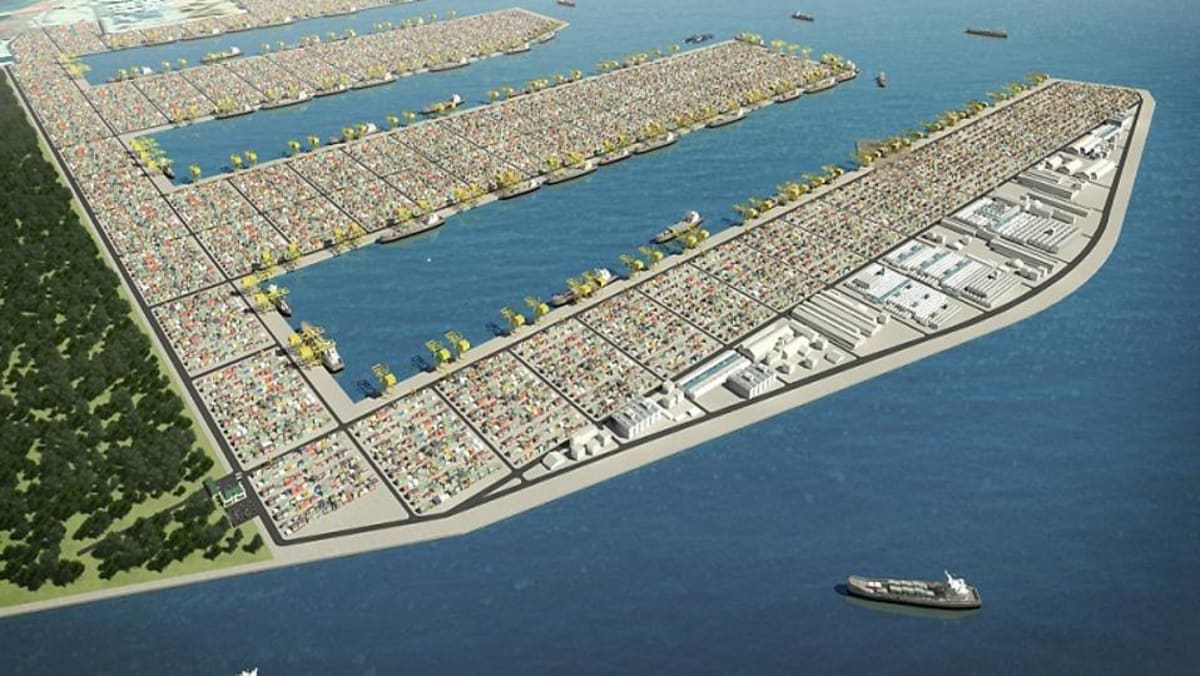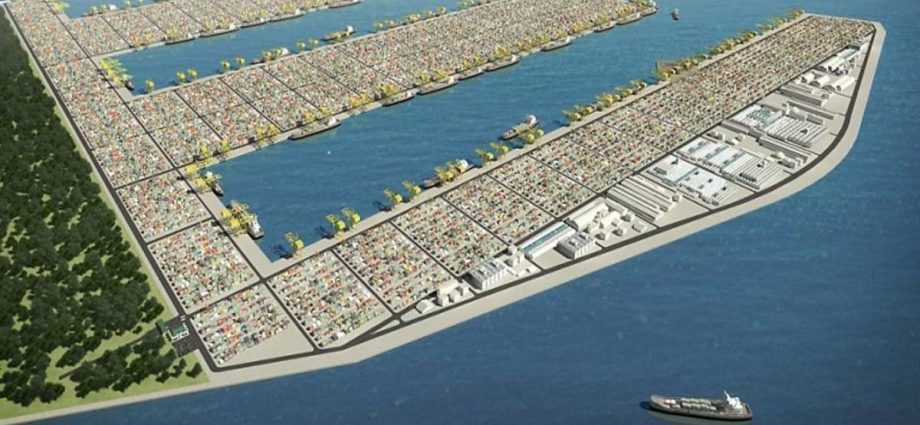
SINGAPORE: Tuas Port will be the world’s largest fully automated port when it is fully completed in about 20 years, said Prime Minister Lee Hsien Loong on Sunday (Aug 21).
Speaking during this year’s National Day Rally, the Prime Minister shared an update on the progress at Tuas Port, 10 years after it was first announced.
Phase 1 of Tuas Port has just been completed, said Mr Lee, with Phases 2, 3 and 4 to follow.
“When it’s fully completed around 20 years from now, Tuas Port will handle 65 million TEUs (twenty-foot equivalent units) annually, almost double today’s volumes,” he added.
“We will have the world’s largest fully automated port, and that should make us a leading global player in the maritime space.”
Reclamation works for Phase 1 of Tuas Port began in February 2015 and were completed in November 2021, said the Ministry of Transport (MOT) in a separate media factsheet on Sunday.
Reclamation works for Phase 2 started in March 2018, and the Maritime and Port Authority (MPA) has begun planning for Phase 3, said the ministry.
The shift to Tuas Port will progressively free up prime waterfront land from Shenton Way to Pasir Panjang for the future Greater Southern Waterfront, said the Prime Minister during his speech on Sunday.
“The move to Tuas has already started. If you drive past the Tanjong Pagar terminal on the AYE, you can see that it is no longer used for container operations,” he added.
“It’s almost empty, and that is why, during the pandemic, we could put up isolation and recovery facilities for COVID-19 patients in the container yard.”
When Phase 1 of port operations at Tuas Port is fully operational in 2027, the port will have 21 deep-water berths that can handle 20 million TEUs annually, said MOT in the factsheet.
The first two berths started operations on schedule in December 2021, and three more berths will be operational by December this year, the factsheet read.
Container port operator PSA expects to move over all of its operations at Tanjong Pagar, Keppel and Brani Terminals to Tuas Port by 2027, and operations at Pasir Panjang Terminal will be consolidated at Tuas Port by the 2040s, said MOT in the factsheet.
Ships from all around the world are calling at Tuas Port, said Mr Lee in his speech.
“Because we had planned ahead, our port was able to handle extra volumes during the pandemic, while ports in other countries experienced closures, severe congestion and long delays. But PSA, our port remained open 24/7 throughout,” he added.
“And we reinforced Singapore’s position as the ‘catch-up port’ because this is where vessels can make up time for delays elsewhere.”
Singapore handled a record high of 37.5 million TEUs in 2021 and kept its position as the world’s busiest transhipment hub, he noted.
In moving to Tuas, port operations have been modernised and upgraded, said Mr Lee.
The new port is automated and digitalised, and uses artificial intelligence to coordinate operations more seamlessly, like vessel traffic management and port clearance. Instead of trucks with drivers, the new port deploys a fleet of driverless automated guided vehicles, said Mr Lee.
PSA will deploy a private 5G network to support 5G-enabled automated guided vehicles and automated cranes at Tuas Port and the current Pasir Panjang Terminal, said MOT in the factsheet.
PSA is also exploring the future use of 5G in cargo handling operations, the factsheet read. The container port operator aims for Tuas Port to achieve net zero emissions by 2050, said the Transport Ministry.
“This smooth transition owes much to our port workers, unions, PSA and MPA. Management and unions worked hand-in-glove to retrain workers and help them adapt to new working environments,” said the Prime Minister.
“And on their part, workers picked up new skills, upgraded themselves and became more productive.”

